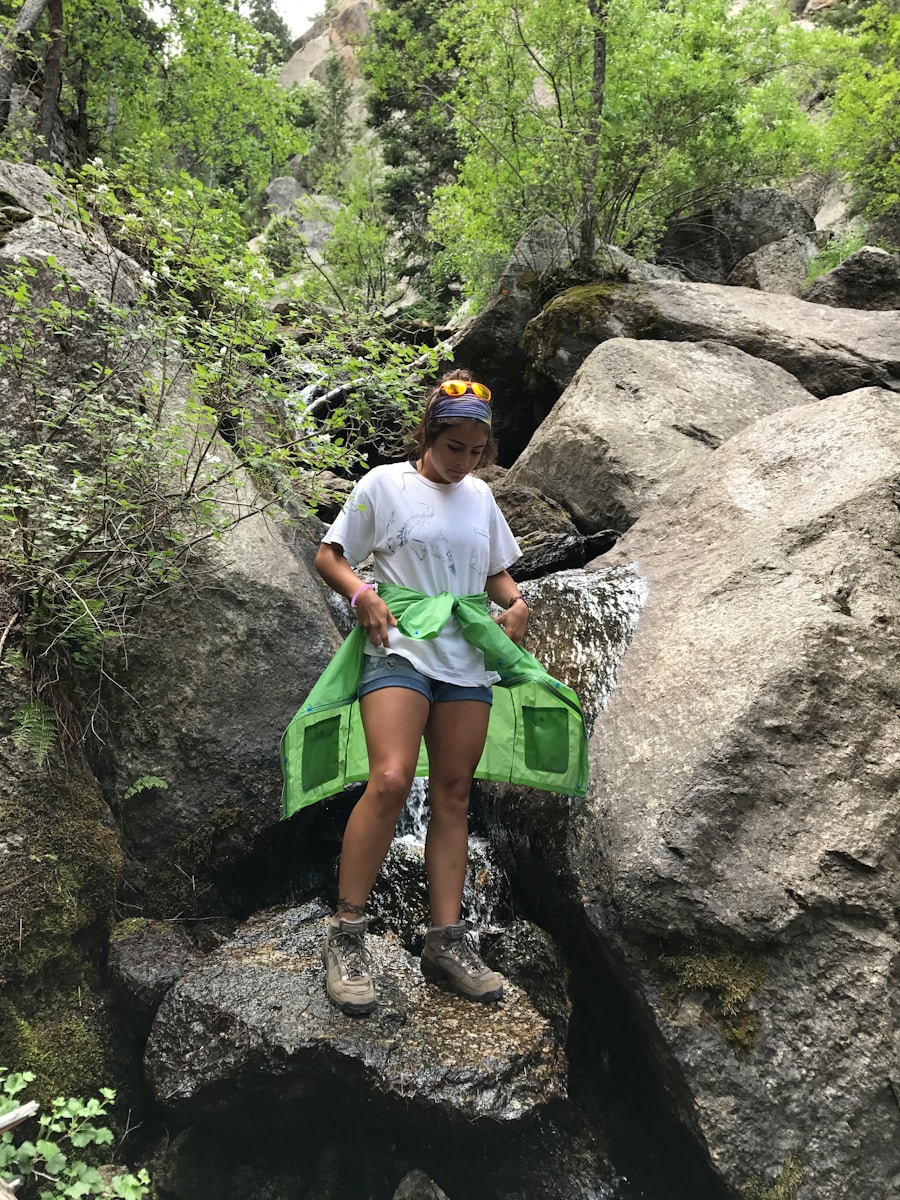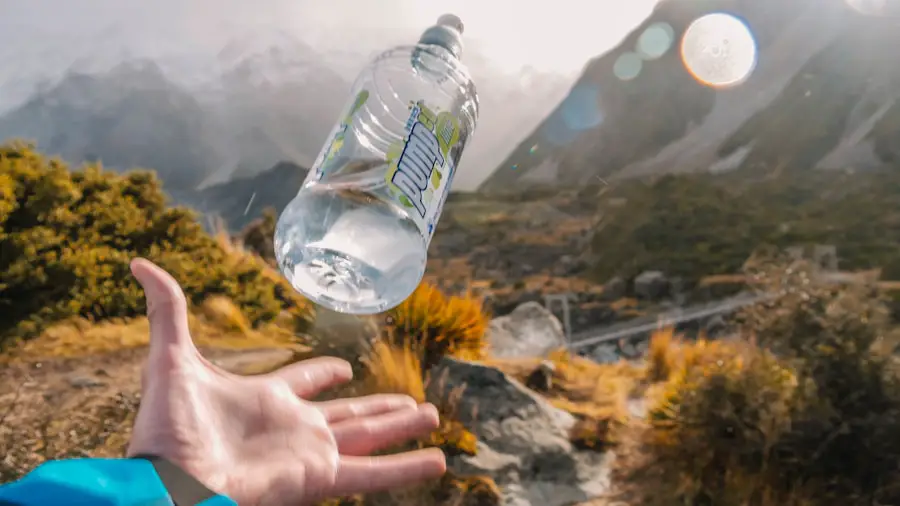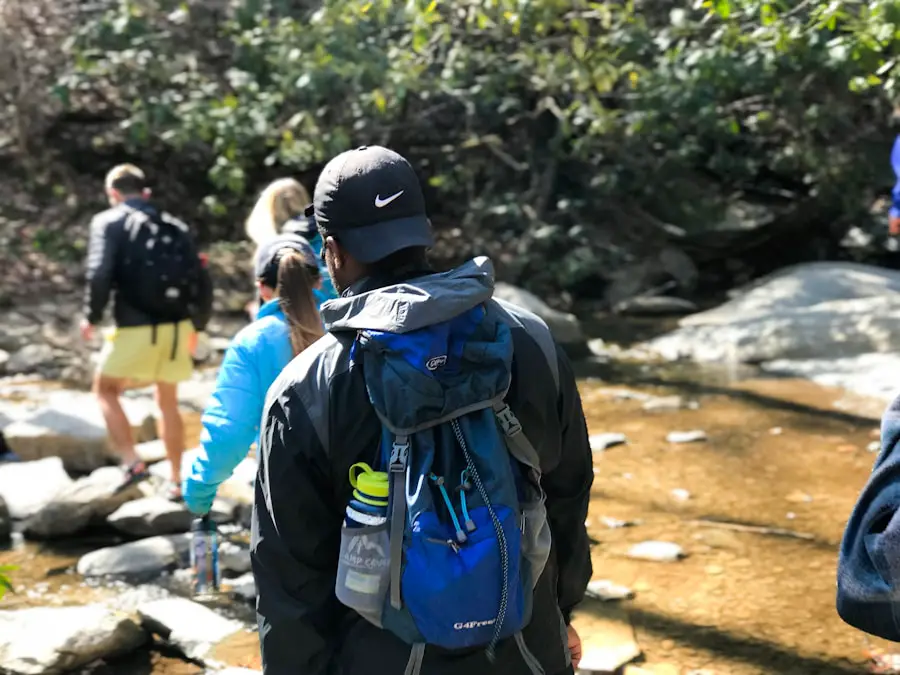Hydration is a critical aspect of hiking that is often overlooked by both novice and experienced hikers alike. The human body is composed of approximately 60% water, and maintaining this balance is essential for optimal physical performance, especially during strenuous activities like hiking. When you hike, your body loses water through sweat and respiration, and if these losses are not replenished, it can lead to dehydration.
Dehydration can manifest in various ways, including fatigue, dizziness, headaches, and impaired cognitive function. In extreme cases, it can lead to heat exhaustion or heat stroke, which can be life-threatening. Moreover, staying properly hydrated enhances endurance and stamina.
When the body is well-hydrated, muscles function more efficiently, and the cardiovascular system operates optimally. This means that hikers can maintain their energy levels for longer periods, tackle challenging terrains with greater ease, and enjoy the overall experience more fully. Additionally, hydration plays a vital role in regulating body temperature.
During physical exertion in hot weather, sweating is the body’s natural cooling mechanism. If hydration levels are inadequate, this process becomes less effective, increasing the risk of overheating.
Key Takeaways
- Proper hydration is crucial while hiking to maintain energy levels and prevent dehydration
- Choosing the right water carrying gear, such as hydration bladders or water bottles, is essential for staying hydrated on the trail
- Hydration bladders are convenient for easy access to water, while water bottles are durable and easy to monitor water intake
- Tips for proper water consumption while hiking include drinking small amounts frequently and monitoring urine color
- Staying hydrated in different weather conditions requires adjusting water intake and being mindful of signs of dehydration
Choosing the Right Water Carrying Gear
Selecting the appropriate water-carrying gear is essential for ensuring that you have access to hydration while on the trail. The choice largely depends on the length of your hike, the terrain, and personal preferences. For shorter hikes, a simple water bottle may suffice.
However, for longer treks or those in remote areas where water sources are scarce, investing in a more sophisticated hydration system is advisable. Options include hydration bladders, water bottles with built-in filters, and even portable water purification systems. Hydration packs are particularly popular among hikers because they offer a convenient way to carry water without taking up much space.
These packs typically come with a reservoir that can hold several liters of water and a tube that allows for hands-free drinking. This design enables hikers to sip water without stopping or fumbling with bottles. On the other hand, traditional water bottles are often more durable and easier to refill at water sources.
They also come in various sizes and materials, from lightweight plastic to stainless steel options that keep water cool for extended periods.
When it comes to hydration systems, both hydration bladders and water bottles have their unique advantages and disadvantages. Hydration bladders are designed for convenience; they allow for easy sipping while on the move and can hold a significant amount of water. This hands-free feature is particularly beneficial during challenging hikes where stopping to drink may not be practical.
Additionally, many hydration bladders are designed to fit snugly in a backpack, making them an efficient use of space. However, hydration bladders also come with some drawbacks. They can be more challenging to clean than traditional bottles due to their narrow openings and complex tubing systems.
If not properly maintained, they can develop mold or bacteria over time. Furthermore, if a bladder develops a leak or puncture, it can lead to a significant loss of water during a hike. On the other hand, water bottles are generally easier to clean and refill.
They are also more durable in terms of handling rough conditions but may require you to stop and take them out of your pack to drink.
Tips for Proper Water Consumption While Hiking

Proper water consumption while hiking involves more than just drinking when you feel thirsty. Thirst is often a late indicator of dehydration; therefore, it’s crucial to establish a routine for hydration before you even set foot on the trail. A good rule of thumb is to drink about half a liter (17 ounces) of water per hour during moderate activity in moderate temperatures.
This amount may need to be adjusted based on individual needs, intensity of the hike, and environmental conditions. In addition to regular sips of water, hikers should also be mindful of their hydration before starting their hike. Drinking a sufficient amount of water in the hours leading up to your trek can help ensure that your body is well-prepared for physical exertion.
It’s also beneficial to carry electrolyte-rich drinks or supplements that can help replenish lost minerals during long hikes. These drinks can provide essential electrolytes like sodium and potassium that are lost through sweat and can help maintain fluid balance in the body.
Staying Hydrated in Different Weather Conditions
| Weather Condition | Recommended Daily Water Intake |
|---|---|
| Hot and Dry | 3-4 liters |
| Hot and Humid | 3-4 liters |
| Cold and Dry | 2-3 liters |
| Cold and Humid | 2-3 liters |
| Mild and Dry | 2-3 liters |
| Mild and Humid | 2-3 liters |
Weather conditions play a significant role in hydration needs while hiking. In hot weather, the body loses fluids rapidly through sweat as it attempts to cool itself down. Hikers should be particularly vigilant about their hydration levels during these conditions, as dehydration can occur quickly.
It’s advisable to increase fluid intake in hot weather and take regular breaks in shaded areas whenever possible to cool down. Conversely, cold weather presents its own set of challenges regarding hydration. Many hikers mistakenly believe that they do not need to drink as much water when temperatures drop; however, this is far from the truth.
Cold air can be dehydrating as well, especially when combined with physical exertion. Additionally, hikers may not feel thirsty in cold conditions but still need to consume fluids regularly to prevent dehydration. Warm beverages can be particularly comforting in cold weather while also providing necessary hydration.
Hydration-Boosting Foods and Drinks for Hiking
Fresh Fruits and Veggies for Hydration
Foods with high water content such as fruits and vegetables are excellent choices for trail snacks. Watermelon, cucumbers, oranges, and strawberries are not only refreshing but also provide essential vitamins and minerals that support overall health during physical activity.
Electrolyte-Rich Drinks
Electrolyte drinks or sports drinks can also be beneficial for maintaining hydration levels during long hikes or strenuous activities. These beverages often contain sodium, potassium, and magnesium—key electrolytes that help regulate fluid balance in the body.
Natural Rehydration Options
For those who prefer natural options, coconut water is an excellent alternative; it is rich in electrolytes and has a refreshing taste that makes it an ideal choice for rehydration on the trail.
How to Monitor Your Hydration Levels

Monitoring hydration levels while hiking is crucial for preventing dehydration and ensuring optimal performance on the trail. One effective method is to pay attention to urine color; pale yellow urine typically indicates proper hydration levels, while dark yellow or amber urine suggests dehydration. Hikers should aim to urinate regularly throughout their hike; infrequent urination can be a sign that fluid intake needs to be increased.
Another way to monitor hydration is by being aware of physical symptoms associated with dehydration. Signs such as dry mouth, fatigue, dizziness, or headaches should prompt immediate action to increase fluid intake. Additionally, keeping track of how much water you consume throughout your hike can help you stay accountable for your hydration needs.
Many hikers find it helpful to set specific goals for water consumption based on the duration and intensity of their hike.
Hydration Mistakes to Avoid While Hiking
Several common mistakes can lead to inadequate hydration while hiking. One prevalent error is waiting until you feel thirsty to drink water; by this time, you may already be experiencing early signs of dehydration. Instead, establish a routine for regular fluid intake throughout your hike.
Another mistake is over-relying on caffeinated beverages or alcohol before or during hikes; both substances can contribute to dehydration rather than aid in hydration efforts. It’s essential to prioritize water or electrolyte-rich drinks instead. Additionally, failing to account for environmental factors such as altitude or temperature can lead hikers to underestimate their hydration needs; higher altitudes often require increased fluid intake due to lower humidity levels.
Understanding these common pitfalls can help hikers make informed decisions about their hydration strategies on the trail. By being proactive about hydration and recognizing the signs of dehydration early on, hikers can enjoy their outdoor adventures safely and effectively.
If you’re planning a hiking trip and wondering how to carry water efficiently, you may want to check out this article on how to stay hydrated while hiking. This informative piece offers tips on the best ways to carry water, such as using a hydration pack or water bottle, to ensure you have enough fluids during your outdoor adventures. It’s essential to stay hydrated while hiking to prevent dehydration and keep your energy levels up.
FAQs
What are the best ways to carry water while hiking?
There are several options for carrying water while hiking, including hydration packs, water bottles, collapsible water bottles, and hydration bladders. Each option has its own advantages and disadvantages, so it’s important to choose the one that best suits your needs and preferences.
How much water should I carry while hiking?
The amount of water you should carry while hiking depends on several factors, including the length and intensity of the hike, the weather conditions, and your own hydration needs. As a general rule, it’s recommended to carry at least 0.5-1 liter of water per hour of hiking.
What are some tips for staying hydrated while hiking?
Some tips for staying hydrated while hiking include drinking water regularly, even if you don’t feel thirsty, and carrying electrolyte-replacement drinks or snacks to replenish lost electrolytes. It’s also important to pay attention to your body’s signals and drink water as needed.
Are there any water purification methods for hiking?
Yes, there are several water purification methods for hiking, including using water filters, purifying tablets, and UV purifiers. These methods can help make water from natural sources safe to drink by removing or killing harmful bacteria and parasites.
What are the potential risks of not carrying enough water while hiking?
The potential risks of not carrying enough water while hiking include dehydration, heat exhaustion, and heat stroke. These conditions can be serious and even life-threatening, so it’s important to prioritize hydration while hiking.
